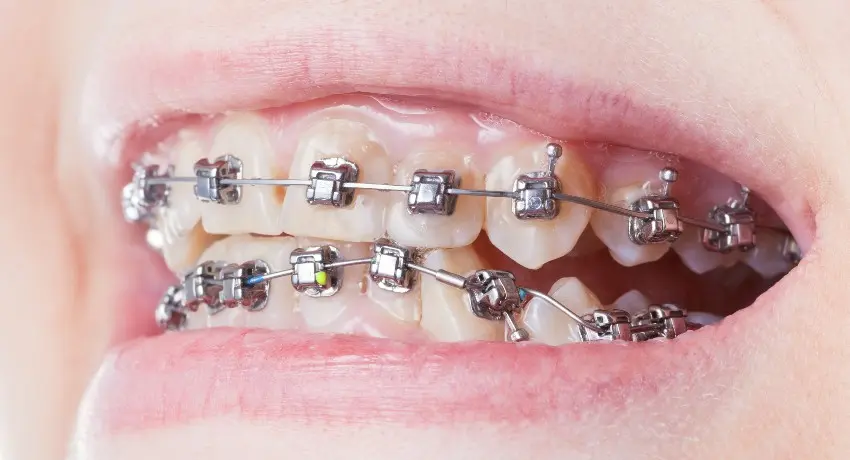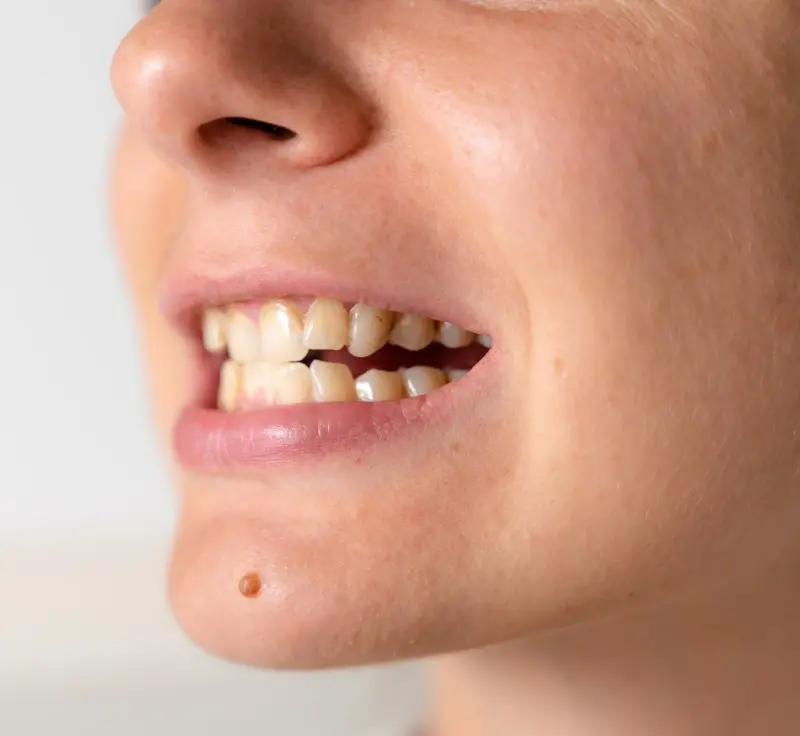Can You Eat Cereal With Braces?
Cereal has been a breakfast staple for decades. Many of us enjoy a nice bowl of our favorite cereals to eat for breakfast. However, if you have braces, you may be wondering if you can enjoy your favorite cereal.

Self-ligating braces straighten teeth with brackets and an archwire. They don't use colored rubber bands but employ specialized brackets that directly clip to the wire. This creates a discreet treatment, available in clear or metal brackets, with a usually metal-colored wire.
When comparing self-ligating braces vs. traditional metal braces, self-ligating brackets play a significant role in this orthodontic treatment.
The installation and treatment process for self-ligating brackets is similar to traditional metal braces. Your orthodontist attaches brackets to your teeth and then secures an archwire with specialized metal bands around your molars. Unlike traditional braces, self-ligating brackets hold the wire in a slot, eliminating the need for colored rubber bands.
This treatment has gained popularity in recent years and offers several benefits to patients. Self-ligating brackets have been in use for decades and provide an effective option for those looking to move their teeth. When considering types of braces, self-ligating brackets are a viable choice alongside traditional metal braces.

Self-ligating braces, similar to traditional metal braces, typically cost between $2,000 to $7,000. This price similarity reflects their comparable treatment methods. Additionally, orthodontic visits for self-ligating braces tend to be shorter since they don't require changing rubber bands, unlike metal braces.
The cost of self-ligating braces covers all aspects of treatment, including pre-braces examination with x-rays and orthodontic visits. It also includes all materials like brackets, archwires, and bands, as well as regular office visits. retainer care may be an additional expense, as not all orthodontists include it in the cost.
Insurance may partially cover self-ligating braces; talk to your insurance provider to explore payment options for orthodontic care.
Orthodontic appliances are part of the self-ligating braces cost, and they hold the archwires in place. Insurance may help cover some of these expenses, so discussing payment options with your provider is advisable.

Self-ligating braces differ from traditional metal braces in one key way: they don't rely on elastic rubber bands. Instead, they feature a design where a small spring-loaded door secures the archwire in place against the brackets, eliminating the need for rubber bands.
This design of self-ligating braces offers several advantages and disadvantages when compared to traditional braces. To understand pros and cons of self-ligating braces, let's delve deeper into their unique features and benefits.
Self-ligating braces offer several advantages when compared to traditional metal braces. These benefits include reduced visibility since they come in clear brackets, making them less noticeable. Additionally, they minimize the likelihood of food getting trapped in the brackets, simplifying oral hygiene by allowing easier brushing and flossing.
The smaller brackets of self-ligating braces enhance comfort, and they require shorter office visits as there's no need to change rubber bands. Importantly, the cost remains the same as that of traditional metal braces, ensuring affordability while enjoying these self-ligating bracketing system advantages.
On the other hand, traditional metal braces offer their unique advantages. Many patients appreciate the opportunity to personalize their braces with colorful rubber bands, adding a touch of fun and personalization. Moreover, for more severe orthodontic cases, traditional metal braces can apply greater pressure and offer greater precision for orthodontists. The larger brackets in traditional braces may also provide more effectiveness in certain situations.
It's worth noting that self-ligating braces may have a tendency for breakage, which can slow down treatment times. The "locking door" mechanism in the self-ligating brackets may occasionally break or loosen, necessitating repairs. This aspect can result in a longer duration for orthodontic treatment compared to traditional braces. In summary, while self-ligating braces have their advantages, such as reduced visibility and ease of maintenance, traditional metal braces continue to serve a valuable purpose in orthodontics, especially for more complex cases.
Learn more about all kinds of braces treatment
Self-ligating braces effectively treat various orthodontic conditions. They closely resemble traditional metal braces. This similarity ensures that conditions treatable with metal braces are also manageable with self-ligating braces.
These braces are particularly suitable for addressing conditions like crowding, gaps, excessive overjet, and overbite. Known as "treatment conditions for self-ligating braces," these issues respond well to the way ligating braces work.
Self-ligating braces are an effective option for treating complex dental issues. These cases may not respond well to clear aligners, such as the Invisalign treatment. They are especially useful for impacted teeth. By using self-ligating braces, orthodontists can address these challenging cases.
Following this initial phase, patients can switch to Invisalign for a more subtle orthodontic solution. This combination forms a comprehensive treatment plan. It blends the strengths of both methods. Ligation braces include advanced features for severe cases, while Invisalign offers discretion.
For those looking to attain straight teeth and a proper bite, self-ligating braces stand as a superb, dependable, and economical option. Consider discussing this orthodontic solution with your orthodontist if it aligns with your dental goals.


Self-ligating braces provide a comfortable and efficient solution for straightening teeth. They are ideal for those seeking quick treatment and fewer visits to the dentist. These braces are clearly visible when placed on the teeth, catering to a wide range of orthodontic needs. This makes them a versatile option for anyone in need of orthodontic care.
In various cases, self-ligating braces are chosen for their effectiveness. They meet diverse orthodontic requirements, ensuring that many different dental conditions can be effectively treated. Their design allows for a more streamlined approach to achieving a perfect smile.
In terms of cost, self-ligating braces present an affordable option, comparable to traditional metal braces. They stand out for their ease of cleaning and overall comfort.
Two types, passive self-ligating braces and active self-ligating braces, cater to different cases. Passive types allow the wire to move freely, reducing friction and discomfort. Active types, on the other hand, use a more active mechanism to move the teeth, suitable for more complex cases.
Self-ligating braces offer a unique advantage over traditional braces. They eliminate the need for bands or metal ties. This design simplifies adjustments and maintenance.
Patients find these braces more comfortable and efficient. They are a practical choice for those seeking affordable orthodontic treatment.
Unlike traditional braces, self-ligating braces are less likely to trap food. This makes them a convenient option for maintaining oral hygiene during treatment. Their design ensures effective results, appealing to a wide range of orthodontic patients.